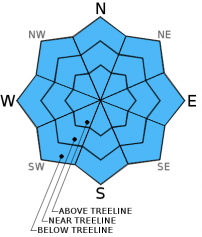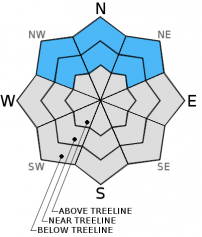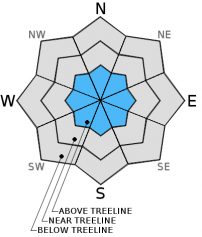| Tuesday | Tuesday Night | Wednesday | |
|---|---|---|---|
| Weather: | Partly cloudy | Partly cloudy becoming mostly cloudy overnight | Mostly cloudy |
| Temperatures: | 25 to 32 deg. F. | 12 to 18 deg. F. | 29 to 34 deg. F. |
| Mid Slope Winds: | Southwest | Southwest | West |
| Wind Speed: | 15 to 20 mph in the morning becoming light in the afternoon | 0 to 5 mph increasing to 10 to 15 mph after midnight | 15 to 20 mph with gusts to 30 mph in the afternoon |
| Expected snowfall: | 0 | 0 | 0 |
| Tuesday | Tuesday Night | Wednesday | |
|---|---|---|---|
| Weather: | Partly cloudy | Partly cloudy becoming mostly cloudy overnight | Mostly cloudy |
| Temperatures: | 18 to 25 deg. F. | 5 to 15 deg. F. | 21 to 28 deg. F. |
| Ridge Top Winds: | West | West | West |
| Wind Speed: | 25 to 30 mph with gusts to 40 mph decreasing to 15 to 20 mph with gusts to 30 mph in the afternoon | 10 to 15 mph with gusts to 25 mph | 10 to 15 mph with gusts to 25 mph increasing to 25 to 30 mph with gusts to 45 mph in the afternoon |
| Expected snowfall: | 0 | 0 | 0 |




























